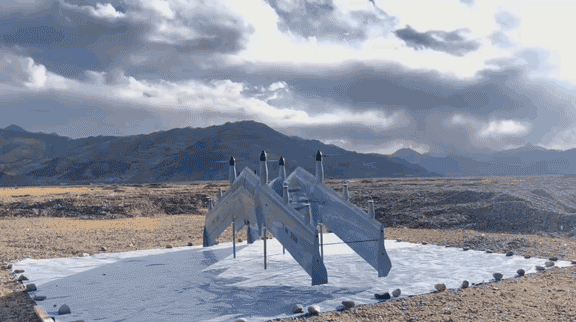From Defense to Commercial Growth: The Rise of VTOL Fixed Wing UAVs
Introduction
For over a decade, military research has refined vtol fixed wing uav platforms—aircraft that combine the efficiency of fixed-wing flight with the runway-free flexibility of vertical takeoff. These innovations, once exclusive to defense, are now transforming commercial sectors. Whether for long-range mapping, utility inspections, or rapid emergency response, hybrid VTOL UAVs are emerging as the default airframe for professional operations.
Military Engineering as the Foundation for Commercial UAVs
Defense programs have historically prioritized redundancy, ruggedization, and reliability. The same design principles—advanced avionics, redundant power systems, and stable vertical-to-forward flight transitions—are now proving critical for industry users. This heritage ensures that commercial operators benefit from aircraft capable of withstanding wind, heat, and challenging terrain, completing missions on the first sortie rather than the third.
Why a VTOL Fixed Wing UAV Stands Apart
A vtol fixed wing uav combines the vertical lift of a helicopter with the long-range efficiency of a fixed wing aircraft. Unlike multirotors, which consume most of their energy hovering, VTOL UAVs dedicate power to distance and payload. BOXIANG’s dual-wing architecture with full-vector control is specifically engineered for wind stability, portability, and quick deployment, offering significant advantages in real-world missions.
Key Advantages:
Runway independence
Greater endurance and payload capacity
Wind resistance and stability in transition phases
Backpack portability and rapid setup
Outperforming Multirotors in Long-Distance Missions
While multirotors excel at hovering, their endurance is limited. A vtol fixed wing uav covers far more ground per charge, making it ideal for:
Large-area mapping (hundreds of square kilometers)
Pipeline and powerline inspection
Valley crossings and mountain terrain surveys
BOXIANG highlights superior endurance, payload flexibility, and portability, making these platforms scalable for national-level missions.
Certifications as Market Accelerators
Airworthiness certification validates safety, reliability, and consistency. BOXIANG’s TW50 and TW200 both achieved CAAC Special Airworthiness Certification, passing with zero corrections.
TW50: Payload ~10 kg, Range ~300 km
TW200: Payload ~50 kg, Range ~400 km
Such approvals streamline adoption with regulators and insurers, accelerating market entry for industries like utilities, logistics, and public safety.
Expanding Commercial Applications for VTOL Fixed Wing UAVs
Seven key commercial verticals are seeing rapid adoption:
Mapping & Surveying – High-resolution coverage with fewer sorties.
Energy & Utilities – BVLOS-ready inspections of power grids and pipelines.
Agriculture & Forestry – Beyond crop monitoring, including biological pest control.
Logistics – Medical delivery, just-in-time spares, and remote supply chains.
Emergency Response – Wide-area mosaics for disaster relief and search operations.
Environmental Monitoring – Coastlines, forests, and offshore energy assets.
Smart Cities – Infrastructure inspections and urban surveillance.
Payload Ecosystem: Where Value is Created
Endurance delivers range, but payloads deliver ROI. BOXIANG equips its VTOL platforms with:
EO/IR stabilized gimbals (4K imaging, day/night clarity)
LiDAR & laser ranging (up to 3,000 m, 240× hybrid zoom)
Multispectral sensors for agriculture and environmental monitoring
High-quality data reduces repeat sorties and improves operational efficiency.
Cost Efficiency and Total Ownership Benefits
Total Cost of Ownership (TCO) is reduced through:
Runway-free deployment
Modular, swappable batteries
One-button takeoff and fast assembly
Single-operator portability
These design features minimize downtime, reduce crew size, and increase uptime.
Autonomy, BVLOS, and Fleet Management
As BVLOS regulations expand, autonomy becomes essential. BOXIANG’s UAVs integrate:
Automated takeoff and landing
Health monitoring and geofencing
Smooth vertical-to-horizontal transitions
This lets operators focus on data collection rather than manual flight control.
Why BOXIANG Leads the Market
Founded on UAV technology from the Chinese Academy of Sciences (2009) and restructured in 2021, BOXIANG emphasizes:
Dual-wing architecture for wind stability
8,000 m² dedicated R&D and production site
Fast field deployment with one-button takeoff
These attributes reflect a focus on real-world usability, not just specifications.
Case Studies and Proven Applications
Disaster Relief – Fast orthomosaic generation in turbulent conditions.
Smart Cities – Runway-free inspections of large urban corridors.
Offshore Energy – Endurance and wind resistance for ocean environments.
Outlook 2025–2030: From Niche to Infrastructure
Industry reports anticipate vtol fixed wing uav platforms evolving into utility-grade aircraft across energy, logistics, public safety, and environmental monitoring. With defense-grade designs now accessible to industry, adoption is set to accelerate globally.
Reports from Chinese and international media already frame the bi-wing vertical-takeoff design as a notable breakthrough with strong market potential, and the company’s steady stream of domain-specific applications suggests the commercialization curve is steepening. 中国日报+1
Buyer Checklist for Selecting a VTOL Fixed Wing UAV
Airframe fit: Portability vs. vehicle staging
Endurance & payload: Match sensor load to sortie requirements
Wind stability: Request real-world transition and gust data
Payloads: Verify gimbal resolution, LiDAR accuracy, and range specs
Certifications & support: Check for airworthiness and training programs
Conclusion
The transition from defense projects to commercial adoption is reshaping UAV markets. A vtol fixed wing uav combines runway-free flexibility with long-endurance efficiency, making it the platform of choice for national-scale mapping, critical inspections, and rapid emergency response. BOXIANG’s certified, field-proven models demonstrate that this evolution is not just possible—it is already underway.
FAQs
Q1: What is the biggest advantage of a vtol fixed wing uav over multirotors?
Energy efficiency—greater coverage per charge.
Q2: How does dual-wing architecture improve performance?
It stabilizes transitions and resists gusts, ensuring sharper imagery and safer missions.
Q3: Which payloads are most valuable for inspections?
EO/IR gimbals, LiDAR, and laser ranging deliver the highest ROI.
Q4: Do certifications matter in procurement?
Yes—airworthiness approvals accelerate regulatory approval and risk management.
Q5: What’s the best first project for new operators?
Start with corridor mapping or familiar line inspections to validate setup time and data quality before scaling.

